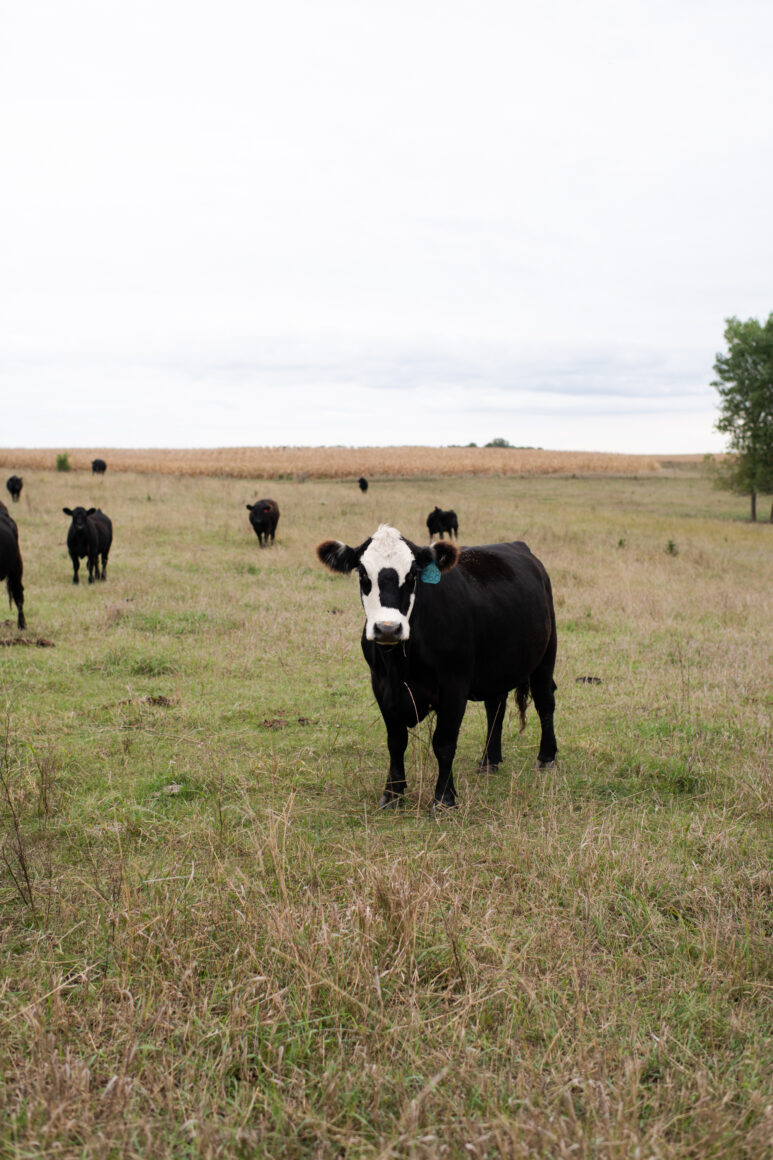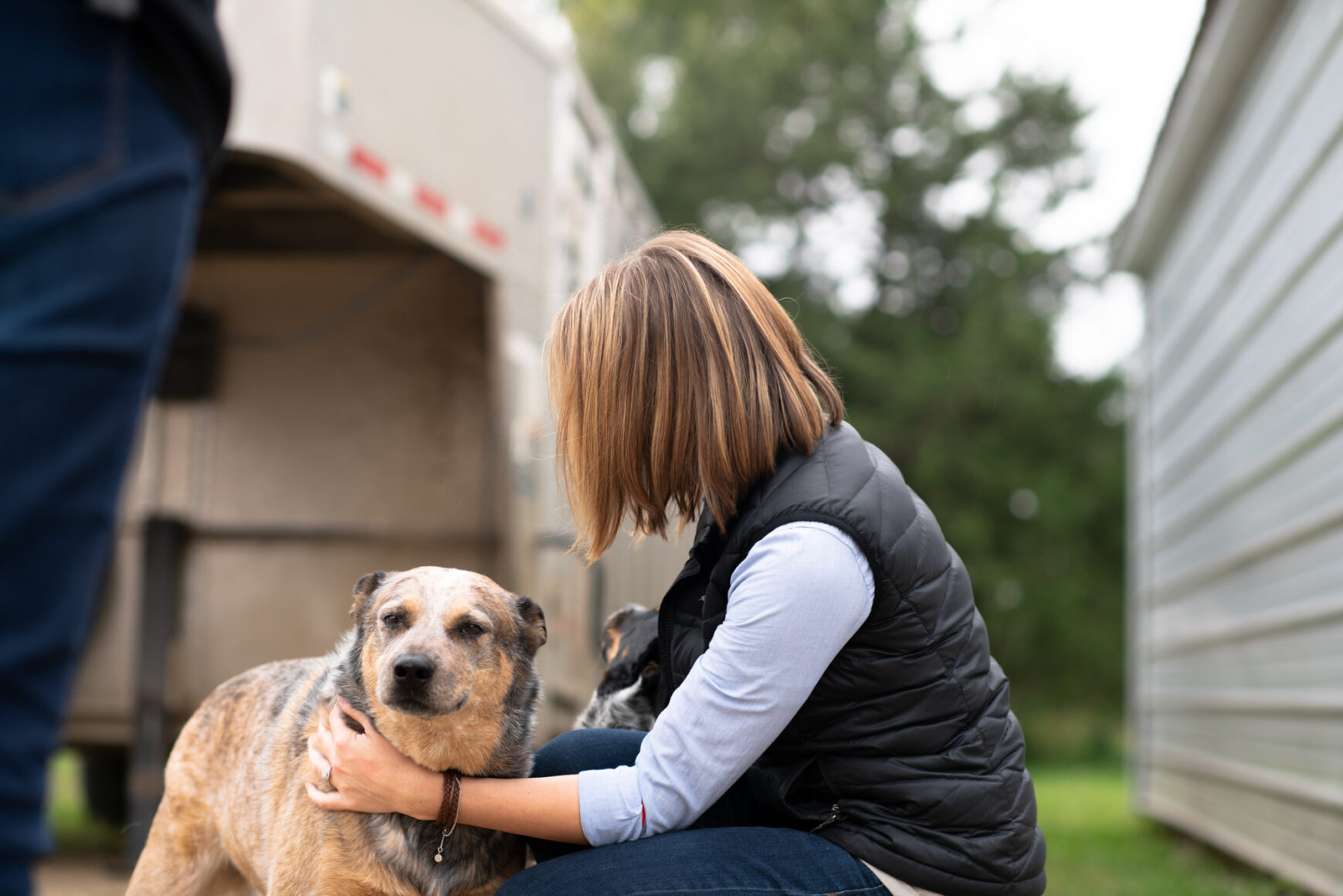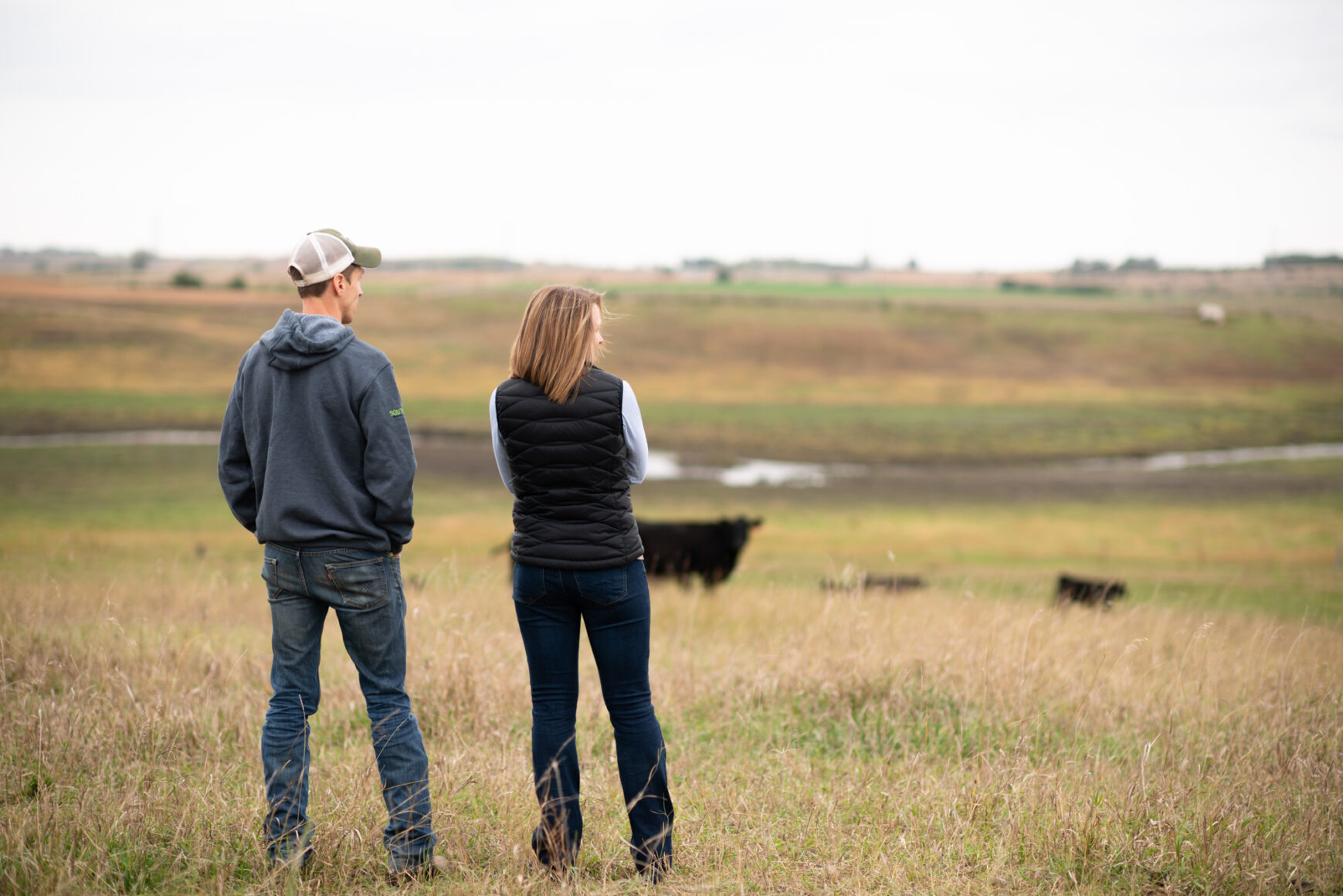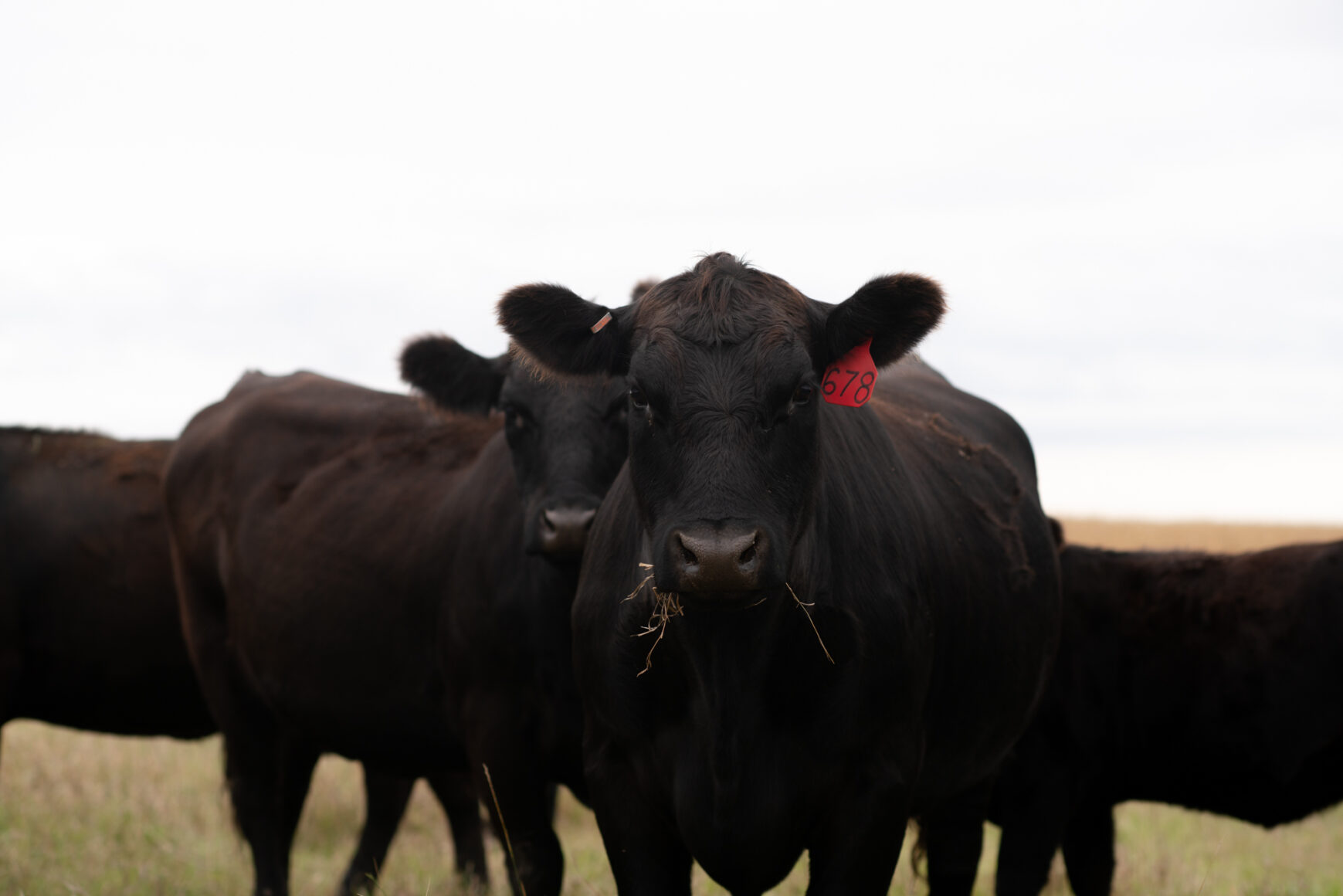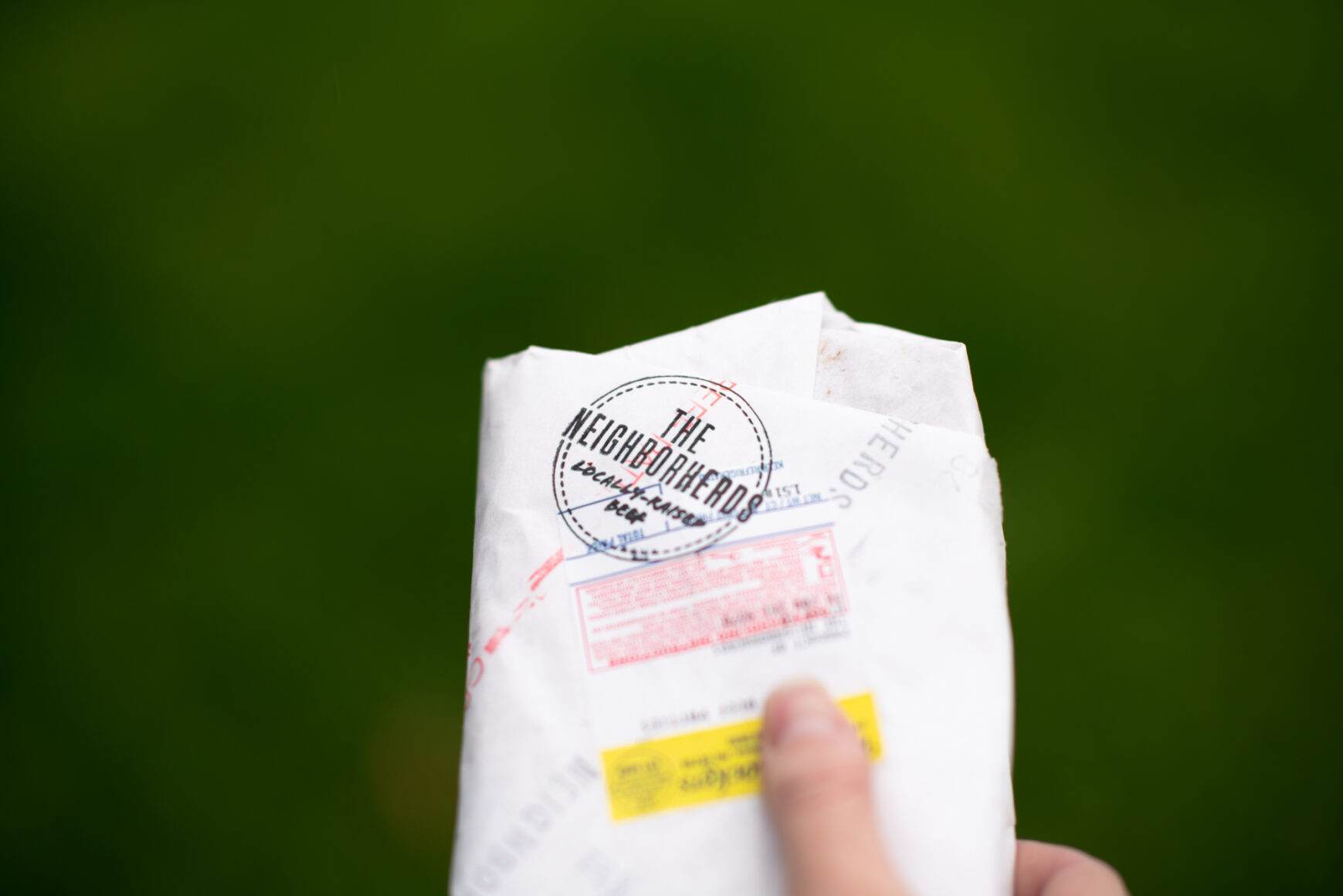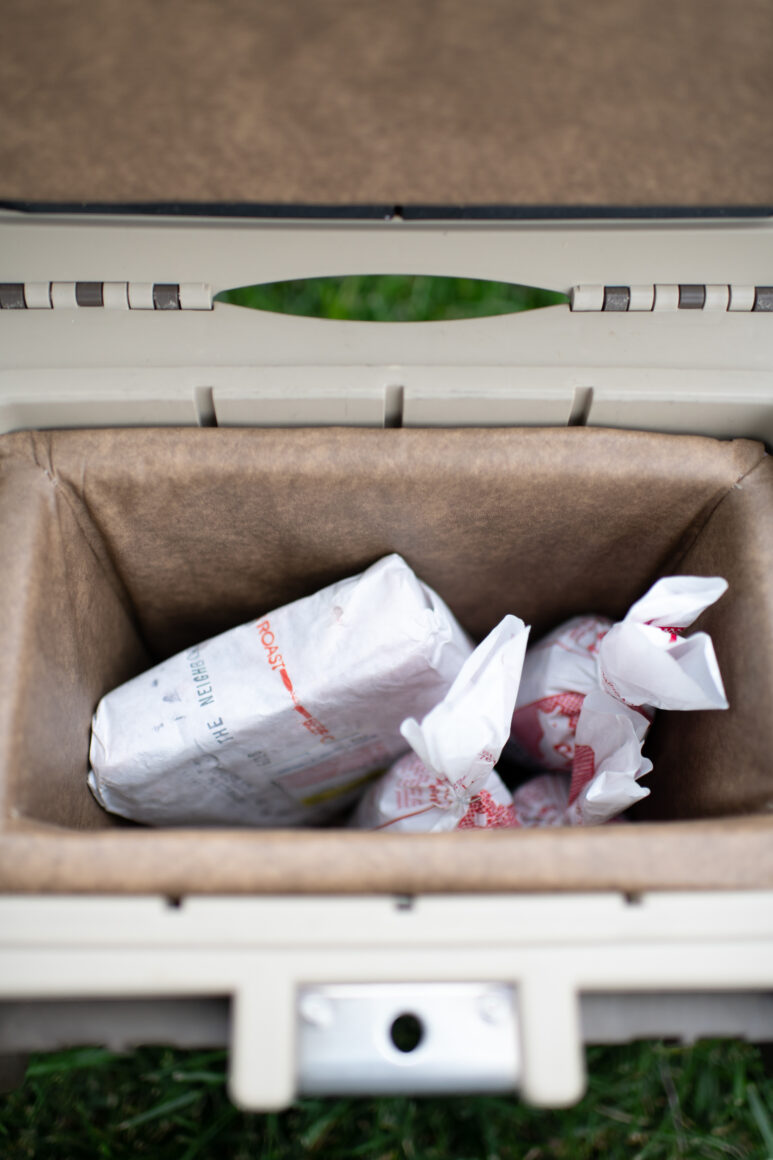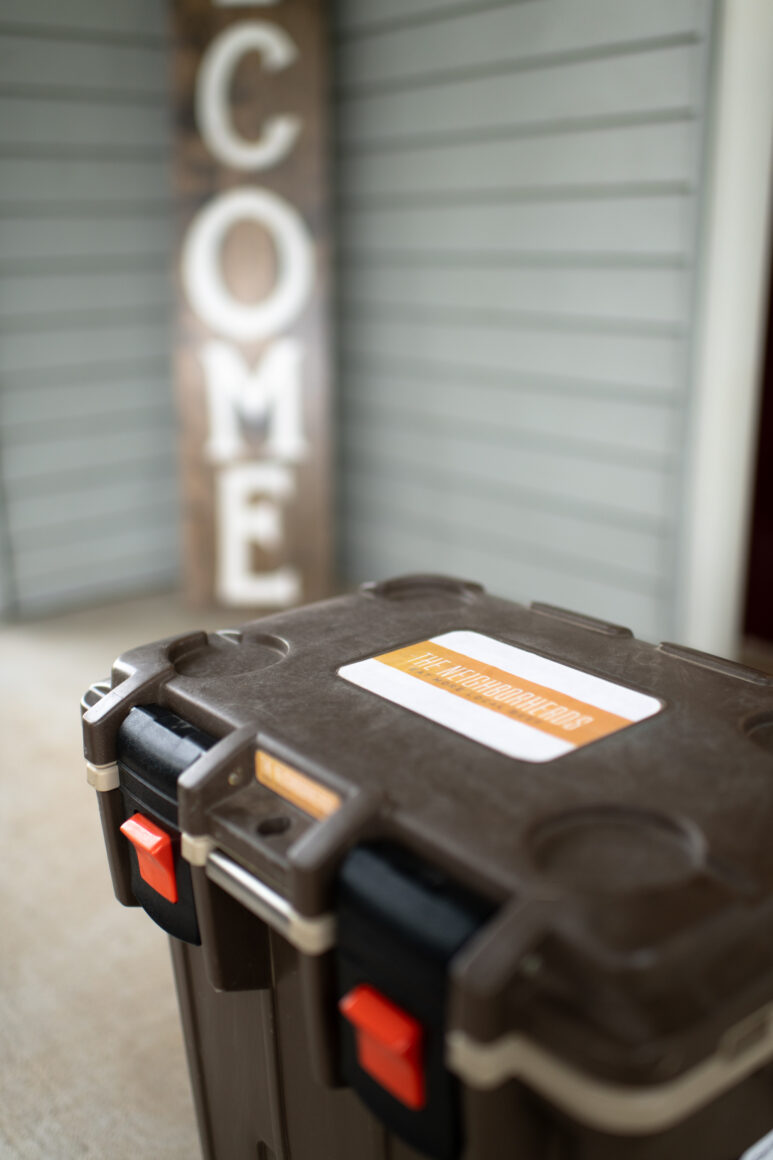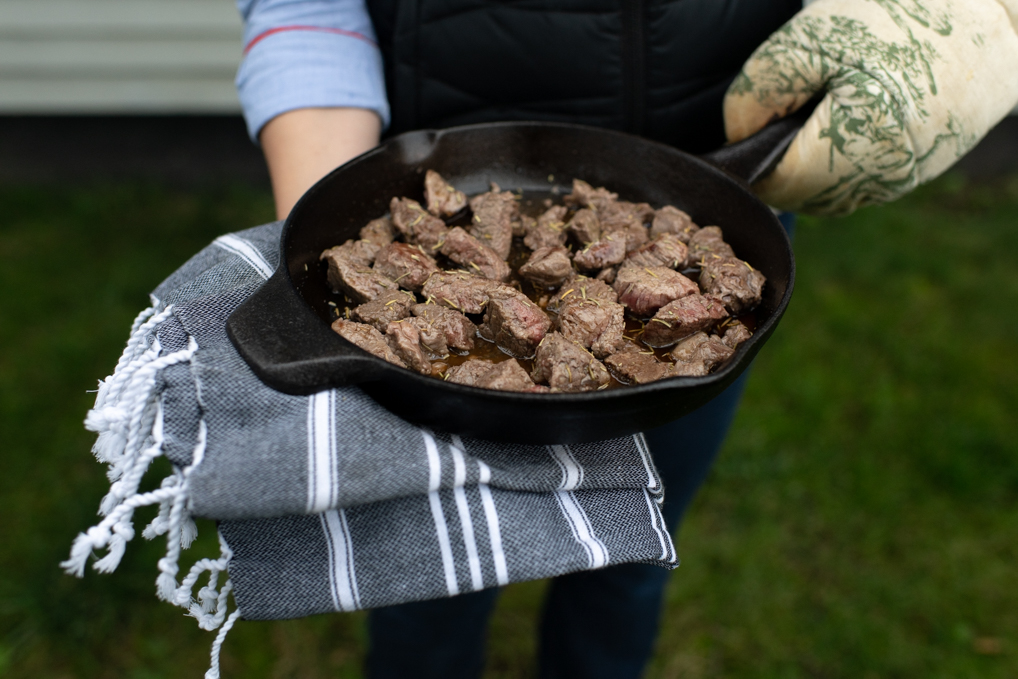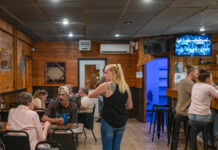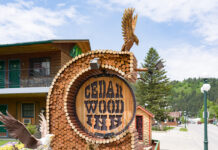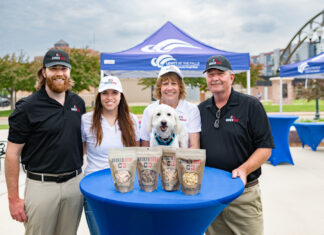As a self-dubbed city girl from Idaho, Kristen Hicks didn’t expect her career to one day revolve around farm-raised beef.
But that changed after she met her husband, Nate, and the couple moved back to Yankton to live on his family’s farm.
Kristen’s first visit to meet Nate’s parents was also her first experience with farm-fresh beef.
“I was just blown away by the flavor,” said Kristen. “It tasted so different from anything I’d ever had before.”
Nate grew up on the Hicks Farm and Ranch, just outside of Yankton. A fourth-generation farmer, he now raises Black Angus cattle with his father.
The animals are pasture-raised, grain-finished, and most importantly, treated like family. It’s an ethical approach to raising cattle.
And beginning in 2017, the Hickses took a passion for what they call the “meat culture mission” and have been building an innovative business.
That’s where The Neighborherds comes in.
While it might sound like the name of a hipster-country-folk band, The Neighborherds is actually a delivery service for ethically-raised, farm-fresh beef.
“THE FLAVOR OF BEEF STRAIGHT FROM THE FARM… YOU’LL BE HARD PRESSED TO FIND IT AT A STORE. WE SERVE LOCAL BEEF THROUGH THE NEIGHBORHERDS WHENEVER WE CAN AT [WILLA B’S].” – CHEF RIKKA KOSTAL, WILLA B’S BISTRO & EMPORIUM
Kristen spent the early days of her career working in marketing, where her passions led her to startups and socially-conscious brands.
“We’re part of a growing generation of people who are just passionate about knowing where their food comes from,” said Kristen.
Conversation with friends over a home grown steak dinner led the Hickses to the realization that even in the Midwest, people struggle to access fresh, local beef
“It’s a pretty complicated process,” said Kristen.
In most cases, you have to locate a farmer, figure out when the beef will be available, purchase a chest freezer (you’ll need space), communicate with the butcher, and pick it up.
Going to the grocery store sounds simpler, doesn’t it?
The problem is, conventional buying options allow for limited knowledge about where and how the cattle were raised.
According to Kristen, meat labeled “Product of U.S.A.” doesn’t actually have to come from animals within U.S. borders.
“The way the FSIS (Food Safety Inspection Services) policy is currently written allows foreign meat to be imported into the states, and as long as it’s processed here, the end product can be labeled, ‘Product of U.S.A.’” says Kristen.
The most common meat supply chain can consist of up to five steps between the animal’s origin and the dinner table. With so many steps it can be difficult for consumers to know the age, breed, and feed of the cattle, along with where and how it was raised.
“These are all things we believe affect the quality and flavor of every cut of beef,” said Kristen.
Farm To Table
The Process
- Raised at partners’ farms or ranches
- Cut and packaged by USDA-Inspected butcher shop
- Stored in cold storage
- Shipped directly from The Neighborherds base to your door
The Neighborherds’ simple supply chain aims to do away with these issues by providing transparency through an online shopping hub for farm-fresh, quality beef, raised in customers’ regions.
“Rancher, to USDA-inspected butcher, and then direct to your door, that’s it for The Neighborherds,” said Kristen.
And besides, the only thing easier than going to the grocery store is shopping online.
The Hickses, along with their growing list of partner farms, raise animals that are grass-fed and grain-finished, without unnecessary antibiotics or added hormones. Once they’ve reached peak age—Kristen says 1 to 2 years for a steer—the animals are sent to USDA-approved butchers, packaged and delivered to customers.
The beef is shipped out to customers in reusable, max-insulation coolers (similar to a Yeti). The coolers come with pre-paid shipping labels, so all you have to do after you’ve received your shipment, is place the cooler back on your doorstep for The Neighborherds’ delivery team to pick up.
It’s easy to see Kristen’s marketing expertise in such a simple, authentic brand.
First, create a high-quality, ethically-raised product. Next, make it simple and sustainable to distribute. It’s all the modern consumer could ask for.
“My passion has always been connecting people to authentic brands and services and products that they need the most,” she said.
Customers can choose to purchase individual packages, but bundling an array of items will, of course, reduce costs.
The more traditional option of purchasing a quarter, half or whole animal is also available.
For the time being, Kristen and her husband are keeping the business regional. Shipping outside the Midwest in the reusable coolers isn’t realistic financially, and the Hicks are dedicated to providing quality and sustainability at a fair price.
Offering the Midwest local, flavorful beef from independent farms at reasonable rates is The Neighborherds’ primary goal. As they expand, they also hope to offer beef raised in different ways, such as 100 percent grass-fed.
Sustainable Shipping
It’s not just cool looking. The Neighborherds ship in a highly insulated shipping container that is sent back to the company after you receive your beef. It helps keep cardboard boxes and plastic out of landfills and keeps the product frozen for up to three days.
“Some want leaner beef that’s 100 percent grass-fed and grass-finished,” explained Kristen. “Others really love the more tender, juicy cut that you typically get with classic Midwest, grain-finished beef.”
Cattle can be raised in numerous different ways, and each provides a slightly different result as far as taste and texture. For the Hickses and their “herd” of customers, taste, quality, and the ability to make an informed decision about where their food is coming from is key to a positive experience.
“We just want to provide an option for people who want to know more about how their food is raised, specifically beef,” said Kristen. “Our customers often tell us they love knowing that the beef they buy from us comes from people in their region and that they can learn how it was raised, healthy and happy.”
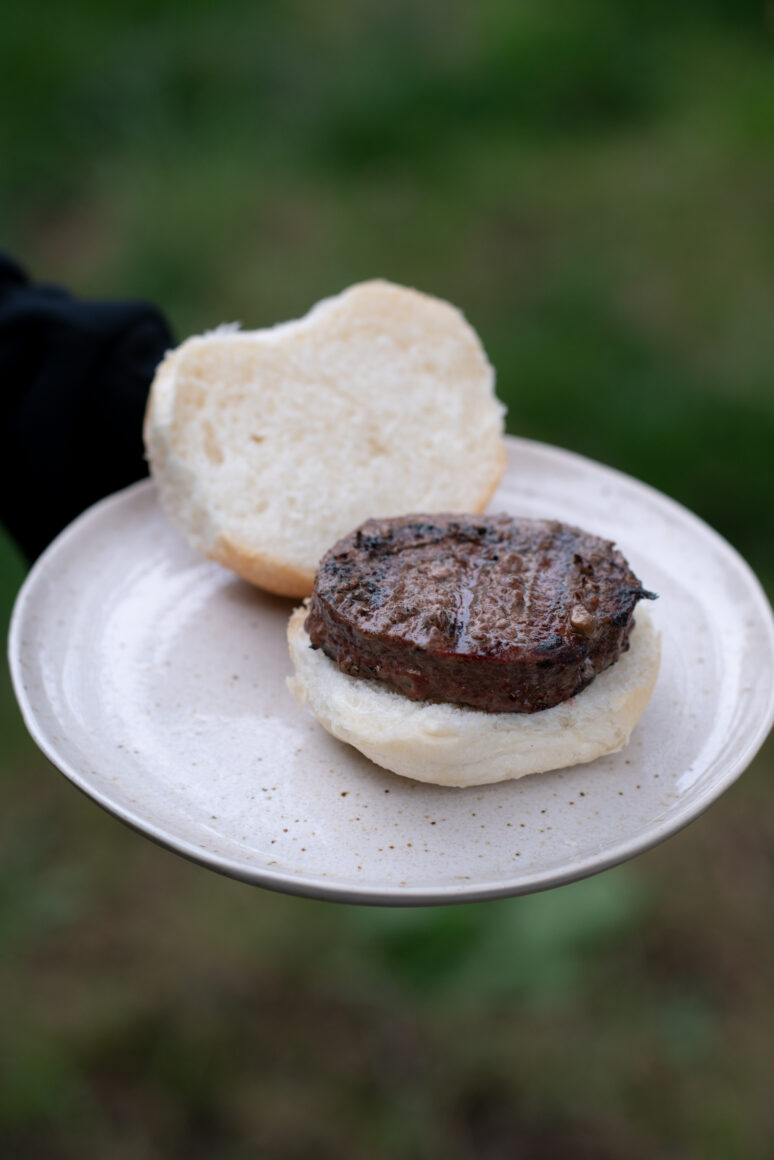 Eventually, the Hicks do hope to expand The Neighborherds to create hubs across the country, where groups of local farmers in different regions could partner with one another to employ the system. Rather than shipping Midwestern beef nationally, these hubs would reduce costs and keep the meat local.
Eventually, the Hicks do hope to expand The Neighborherds to create hubs across the country, where groups of local farmers in different regions could partner with one another to employ the system. Rather than shipping Midwestern beef nationally, these hubs would reduce costs and keep the meat local.
At the root of it all, The Neighborherds seeks to help people understand where their food is coming from and how it’s raised.
“We’re all about transparency,” reiterated Kristen. “Our focus is telling the story of the farms and ranches that provide our beef. We practically give you their address.”
From the pasture to your front porch, The Neighborherds are out to change the way the Midwest gets its beef.
For more information, visit theneighborherds.com.
GIFT IDEAS:
Know a “grill master” or protein lover? Ship directly to their door or purchase a gift card so they can pick their cuts.
Perfect for:
- Grill Aficionados
- Beef Lovers
- Keto Or Paleo Dieters
- Conscious Consumers
FOR PLANNING:
The Neighborherds lets you buy in bundles or single cuts for the planners and cost-conscious.
- Typically comes with 2-4 different cuts of beef totaling 4 to 8 lbs.
- Between 8-16 servings or 2-4 meals for a family of 4.
- Average serving size is 8 oz. (1/2 lb).
- Save on shipping.
- c=Compared to similar-quality beef with traceable sources (farms and ranches).
SOUTH DAKOTA CHISLIC
(BEEF BITES)
INGREDIENTS
- 1 lb. The Neighborherds Stew Beef Cuts – Cut down on prep time: comes pre-cut one-inch cubes
- Vegetable oil
- Seasoning salt The Neighborherds prefer Johnny’s Seasoning Salt
- Thyme
- Rosemary
- Hot sauce or red pepper flakes Optional: For those who like a little kick
SERVING
Use toothpicks to serve. Have the hot sauce handy for those who like a little kick.



